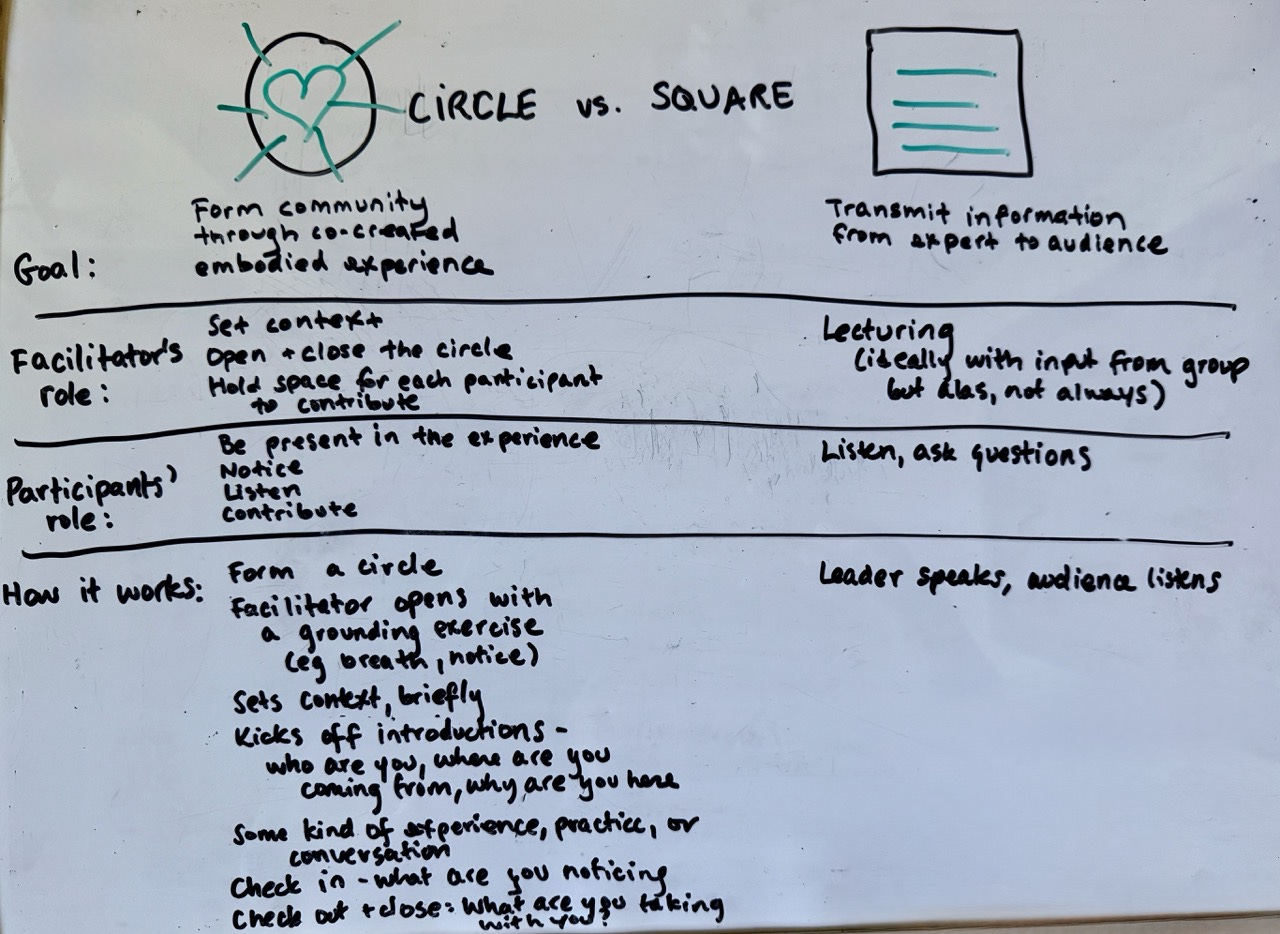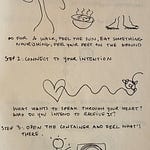Humans have been gathering in circles forever. From indigenous practices across many cultures to consciousness-raising 1970s feminism to countless contexts today, circles have been a shape whose goal is community-building through conversation and embodied experience (breathing together, moving together, practicing something together). I’ve led circles in dream work and in corporate contexts, and participated in circles on topics including foraging, herbalism, nature walks, yoga, dance, sex, politics, and inner work. These circles, though themes vary widely, have certain patterns in common and contrast strongly with “square” teaching formats featuring a lecturer and an audience. Square formats can be done well, of course, with talented lecturers engaging the audience through storytelling and participation—but often, they are treated as just a way to convey information from an expert. I’ve been in a few of those squares recently, reflecting on how this is not the shape for our times.
In a circle, community-building is a primary goal, along with building collective experience and understanding. The facilitator’s role is to set context, open and close the circle, and in between, hold space for introductions and contributions from the individuals in the group. Who are you? Where are you coming from? Why are you here today? What are you noticing? What are you taking with you from this experience? These are the simple, basic questions that shape an effective circle.
This is important because now is the time to gather, and how we gather matters. Are we gathering to listen to one person and follow them, or to honor the wisdom within each of us and move forward in mutual support? Circles are as relevant today as they’ve ever been, to connect with and share what each of us carries in our soul’s pantry.












